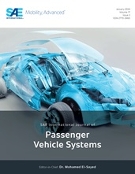Your Destination for Mobility Engineering Resources
Announcements for SAE Mobilus
Browse All1 of 2
2 of 2
Recent EDGE Research Reports
Browse All 1401 of 2
2 of 2
3 of 2
4 of 2
5 of 2
Latest Journal Issues
Browse All 161 of 3
2 of 3
3 of 3
4 of 3
5 of 3
Recent Books
Browse All 9351 of 2
2 of 2
3 of 2
4 of 2
5 of 2


